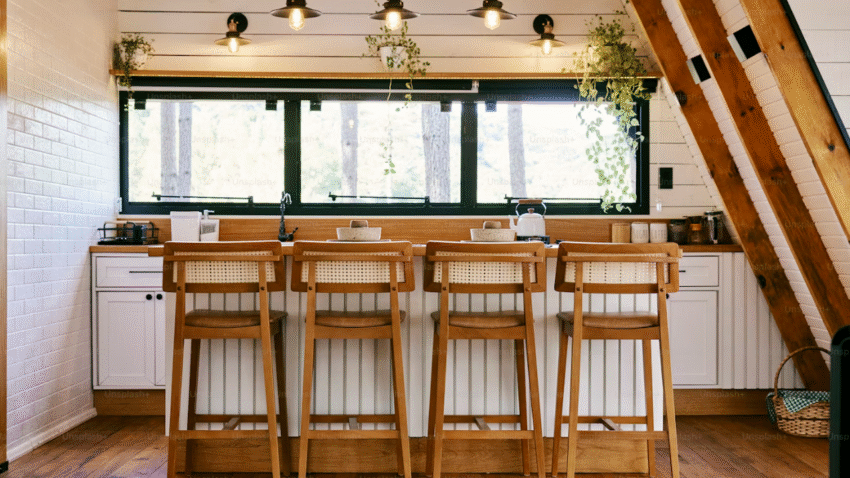Introduction
Are your kitchen drawers a jumbled mess of spatulas, whisks, and measuring spoons? Struggling to find the right tool when you need it can slow down your cooking and clutter your space. The good news? You can fix it fast. In this step-by-step guide, you’ll learn how to organize kitchen tools in drawers for a cleaner, more efficient kitchen workflow—without having to buy a whole new cabinet system.
Why Organizing Kitchen Tools in Drawers Matters
An organized drawer system can completely transform your kitchen experience. Instead of rummaging through tangled utensils while something burns on the stove, you’ll know exactly where everything is—and be able to grab it with one hand.
Organized drawers save time, reduce cooking stress, and protect your tools from damage. They also make cleaning up quicker and help maintain hygiene by preventing cross-contamination between tools like meat thermometers and vegetable peelers. Whether you’re a daily meal prepper or an occasional baker, this small project pays off every time you cook.
Step-by-Step Guide to Organizing Kitchen Tools in Drawers
1. Empty All Your Drawers
Start by clearing out every drawer that holds kitchen tools. Lay everything out on a counter or table so you can see what you’re working with.
Tip: Use a towel or large tray to sort items by type—spoons, knives, openers, spatulas, etc.
2. Sort and Declutter
As you sort through tools, ask yourself:
- Do I use this regularly?
- Is it broken, rusted, or duplicated?
- Can I store this somewhere else more efficiently?
Set aside:
- Keepers: High-use tools in good condition
- Duplicates: Keep only the best version
- Donations/Trash: Toss damaged or unused items
Kitchen Tip: Most people only use 20% of their tools 80% of the time—focus on that 20% first.
3. Clean the Drawers
Wipe out the inside of each drawer with a damp cloth and all-purpose cleaner. Let everything dry fully before placing organizers or tools back inside.
Optional: Add drawer liners to protect surfaces and prevent slipping.
4. Choose the Right Drawer for the Right Tools
Not every drawer is equal. Assign drawers based on size and proximity to work zones:
- Near the stove: spatulas, tongs, wooden spoons
- Near the prep area: peelers, graters, measuring cups
- Top drawer: daily essentials (e.g., can opener, scissors)
- Lower drawer: less-used or bulkier tools
Reminder: Frequently used items should be in the top drawers closest to your prep and cook zones.
5. Use Drawer Organizers
Drawer organizers are the secret to keeping everything in place. You don’t need anything fancy—plastic bins, bamboo dividers, or even repurposed boxes work well.
Options include:
- Adjustable dividers for customizing compartments
- Small bins or trays for loose items like measuring spoons
- Knife blocks or in-drawer knife trays
- Deep drawer pegboards for larger tools
Pro Tip: Measure your drawers before purchasing organizers to ensure a perfect fit.
6. Group Items by Category
Keep similar tools together:
- Mixing & Prep Tools: whisks, spatulas, peelers
- Cutting Tools: knives, scissors, pizza cutters
- Measuring Tools: cups, spoons, kitchen scale
- Openers: can opener, bottle opener, corkscrew
- Specialty Tools: garlic press, zester, thermometer
Groupings make it easy to find what you need fast and return it to the right place after use.
7. Stack or Nest Wisely
To save space:
- Nest measuring cups and spoons
- Stack small spatulas or scrapers by size
- Use rubber bands or clips to bundle similar tools
Avoid stacking too many items in one section—it makes things hard to access and messy again fast.
8. Label If Needed
If multiple people use your kitchen (or if you just like systems), label drawer sections or bins with a label maker or masking tape and marker. Labels keep everyone on the same page and help maintain the system long-term.
Optional: Create a quick-reference map of what’s in each drawer—especially helpful for renters, roommates, or shared kitchens.
Common Mistakes to Avoid
Mistake 1: Overstuffing Drawers
Too many items lead to clutter.
Solution: Declutter first and only return what you actually use.
Mistake 2: No Divider System
Loose tools slide everywhere and create chaos.
Solution: Use bins, trays, or dividers to keep tools separated.
Mistake 3: Storing Rarely Used Tools in Prime Drawers
This takes up valuable space.
Solution: Store occasional-use items in lower drawers or another location.
Mistake 4: Mixing Dirty and Clean Tools
Cross-contamination risks increase.
Solution: Only store clean, dry tools in organized drawers.
Mistake 5: Ignoring Maintenance
Drawers get dirty and disorganized over time.
Solution: Set a reminder to clean and reset drawers every 2–3 months.
Extra Tips & Kitchen Hacks
Store Multipurpose Tools Up Front
Tools that serve multiple functions (like kitchen shears or tongs) deserve a spot near the top—they’ll save you time and drawer space.
Rotate Seasonally Used Items
Move holiday-specific or seasonal tools (like corn cob holders or baking thermometers) into a separate drawer or storage box when not in use.
Go Vertical with a Drawer Lid Rack
Use a lid organizer in deep drawers to stand up cutting boards, baking sheets, or flat tools—this saves space and prevents piling.
Related Task: Once your drawers are done, tackle your utensil crock or counter containers next. The less you keep out, the more streamlined your kitchen will feel.
Conclusion
Organizing kitchen tools in drawers might seem like a small project, but it makes a huge impact on your cooking speed, space, and sanity. With a little planning, some drawer dividers, and regular decluttering, you can create an efficient tool system that works for your kitchen and lifestyle.
One last tip? Stick to the golden rule: if you use it all the time, keep it within reach. Bookmark this guide and revisit every season to keep your kitchen drawers clutter-free and ready to cook.
